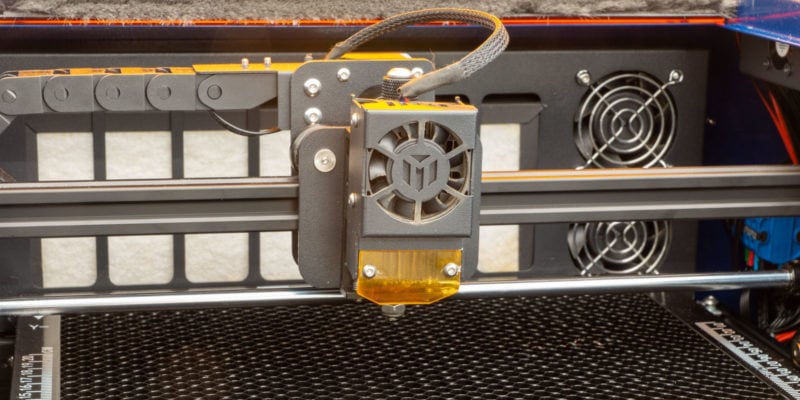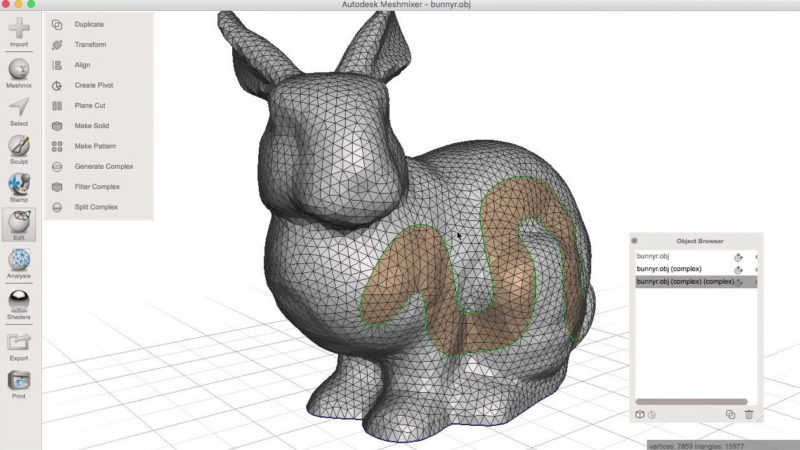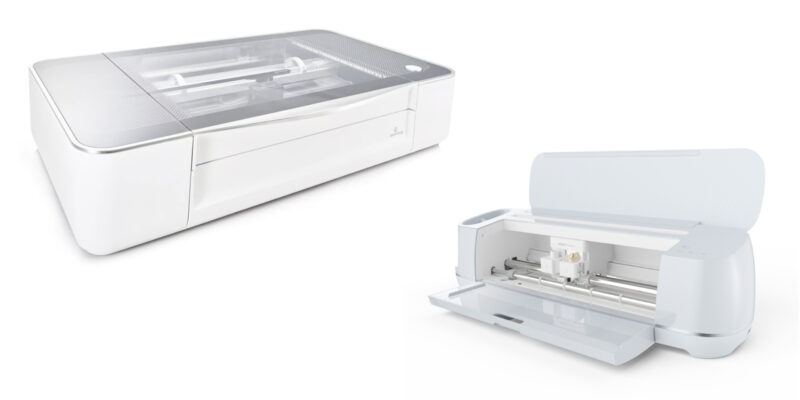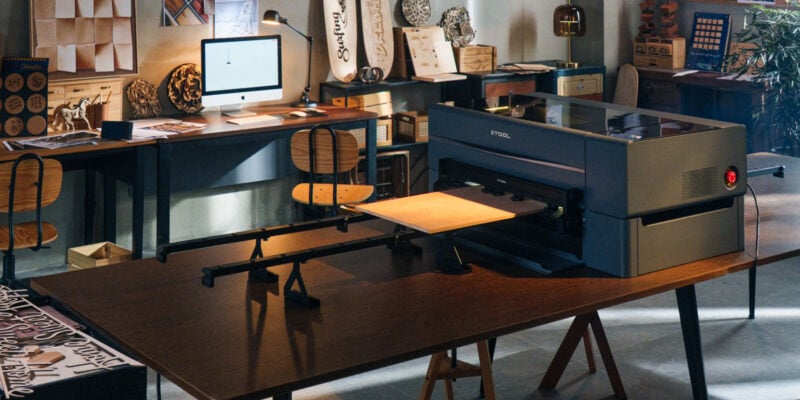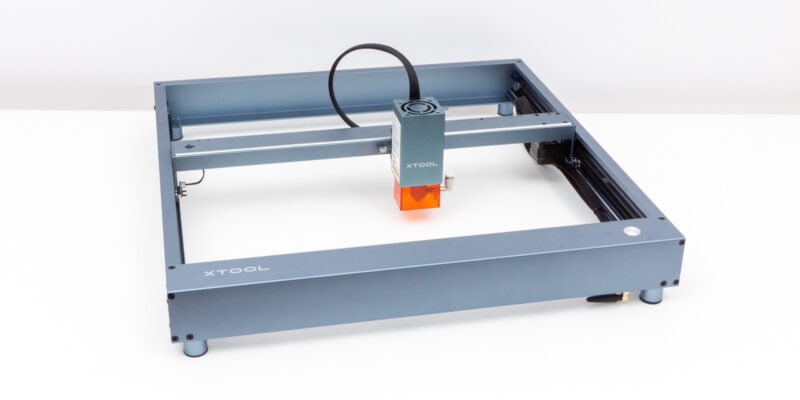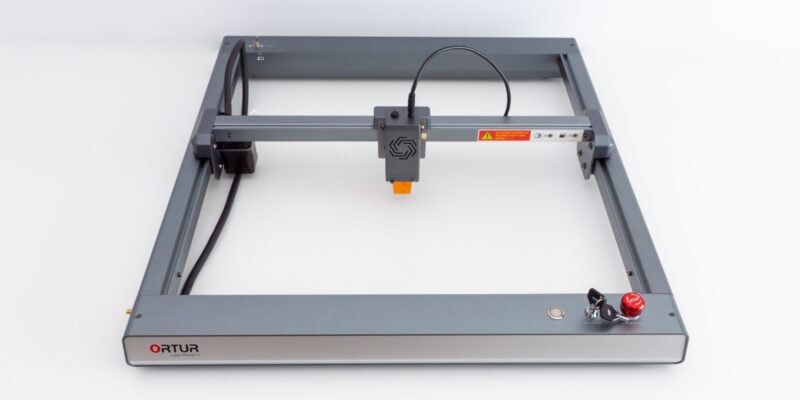The first laser cutting machines were invented in the 1960s. Since then, the technology and the hardware have improved vastly. But, even if you have all the best hardware components put together in a laser machine, they’re only going to be as good as the software running it.
For that reason, it’s crucial to select a good laser cutter software that complements your projects and seamlessly works with your laser machine. And thankfully, there are various software options designed for all kinds of laser cutting projects; some paid, some free.
This article will go over some of the best laser engraving software options and help you make an informed decision to select the best one for you.
Let’s first take a quick look at the basics of laser machine software.
What Does Laser Cutter Software Do?
A laser cutting software’s role is to translate virtual designs into physical products. Your design file acts as an input for the software, and the final output file (Gcode/SVG/DXF) is fed directly to the laser cutting machine to bring your designs to life.
There are three tiers of laser cutting software – Design (CAD), Machining (CAM), and Control. Using design software, you can create and edit designs and files for laser engraving machines. Although your design files are ready, they’re not yet in a readable format for laser cutters.
The CAM software converts these files into a Gcode format for the laser cutter. In this software, you’ll have the option to configure the laser speed, power, material thickness, and other parameters related to your laser cutting machine.
Finally, the laser cutting control software sends these files to the laser cutter machine. It acts as the bridge between your control station (desktop) and the laser cutter, and you can control and visualize every aspect of your device via this software.
Often, you need three or at least two separate software, one for each stage, to create projects with your laser cutter. But exceptions exist, and software like LightBurn encompasses all three functions and provides you with all the essential tools for creating your laser-cut designs.
What to Look for in Laser Cutter Software?
Image Format Support
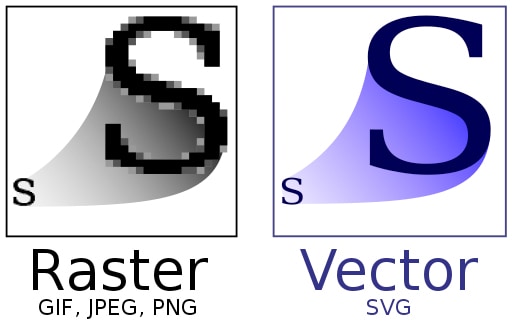
Raster and Vector image formats are widely used across all laser cutter software. These formats are the basis of any image and are a method by which the software recognizes these files.
Raster images are your typical JPEG, PNG, and GIF pictures composed of multiple pixels. Each image has a fixed pixel size, often denoted by its resolution. As you zoom into this image, you’ll see the individual pixels that make up the picture.
The limitation of this file format lies in the fact that it’s not easily scalable. If you crop out a small portion of the image and try to cut it on your laser cutter, you’ll not get smooth, straight edges, and even the details within the image will appear pixelated. Therefore, this file format is not suitable for laser cutters.
In contrast, Vector files are made up of mathematical equations connecting several points in a straight or curved line. This factor allows you to quickly scale up and down your images without any loss in the picture’s quality. The final image will have sharp edges and clean details, helping you to achieve a high-quality laser cut.
It’s essential to choose a laser cutting software that supports rather files, but also all common vector graphic file formats.
Aside from that, you also want to be able to easily convert from raster to vector files. Many software solutions help you achieve this by giving you drawing tools to trace an image manually. But, this is a cumbersome process involving a lot of manual labor.
However, some laser engraver software such as Inkscape, Adobe Illustrator, and DraftSight support automated image tracing, quickly converting your raster images to vector format. It’s a fast and easy process that quickly converts vector graphics for further processing.
Platform Compatibility
It’s best to choose a compatible laser cutting software that works seamlessly on various platforms. Windows, macOS, and Linux are three famous and widely used operating systems on desktops. Broad platform compatibility ensures that your system specifications do not limit you when choosing the best laser cutting software.
Adobe Illustrator, LightBurn, and Inkscape are some of the popular laser cutter software that runs on all three systems, with Illustrator having additional compatibility with iPad OS. Some software, like OpenBuilds CAM and LaserWeb, is designed to run in a browser environment, freeing you from the limitations of your system.
On the other hand, LaserGRBL and SolidEdge laser cutting software are designed to run solely on Windows OS. For that reason, it’s essential to check the software’s compatibility before you make your choice.
System Requirements
Specific laser engraver software such as Adobe Illustrator, SolidEdge, and DraftSight is resource-intensive and requires powerful hardware to run on your systems. In comparison, software such as LaserWeb, SolveSpace, and Inkscape are light on your system and can run with minimal specifications.
While selecting a laser cutter, you need to check the compatibility of the software with your system and ensure that it’s capable of running on your desktop. It’ll help you choose software that matches your computer specifications and that does not require extra investments in your hardware.
| Laser Cutter Software | Best For | Platform | Price |
|---|---|---|---|
| LaserGRBL | File preparation, Machine control | Windows | Free |
| Inkscape | Design | Windows, macOS, Linux | Free |
| OpenBuilds CAM & Control | File preparation, Machine Control | Web-based, Windows, macOS, Linux | Free |
| LaserWeb | File preparation, Machine Control | Web-based, Windows | Free |
| SolidEdge 2.0 | Design | Windows | Free |
| SolveSpace | Design | Windows, macOS, Linux | Free |
| LightBurn | Design, Preparation, Machine control | Windows, macOS, Linux | $60.00 - $120.00 |
| DraftSight | Design | Windows, macOS | $211.00 - $508.00 / year |
| Adobe Illustrator | Design | Windows, macOS, iPadOS | $21.00 / month |
The Best Laser Cutting and Laser Engraving Software in 2024
Free
LaserGRBL
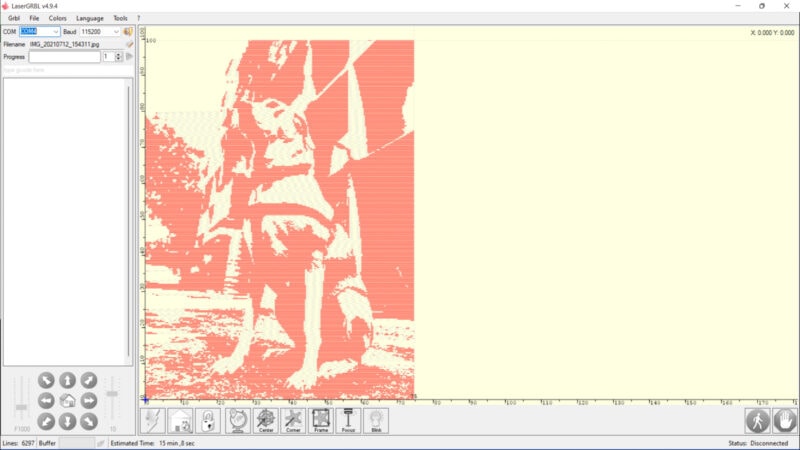
LaserGRBL is a free software for laser engravers widely recognized amongst hobbyists as one of the best free laser engraving software. It supports raster and vector images and lets you easily laser engrave images with its line-to-line tool.
You can create custom buttons for specific functions and control your machine’s movements from the software’s interface. Additionally, LaserGRBL lets you override your laser power and speed settings to help you fine-tune your final output.
The Gcode preview function comes in handy to visualize the laser beam’s path quickly. You can even apply different color schemes in the software to accommodate the color of your safety glasses.
It’s easy to use, feature-rich, reliable, and has good community support when you run into any issues. However, for now, it’s only available for Windows systems. Nonetheless, LaserGRBL’s features are adequate for beginners and hobbyists, and it’ll go along well with many laser cutters.
- Price: Free
- Use for: Laser engraving and control software on Windows
Inkscape
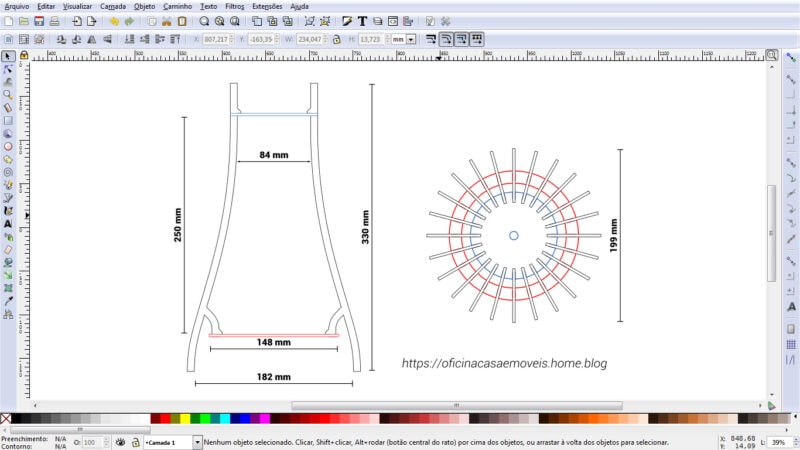
Inkscape is graphic design software with several powerful features that come in handy for laser engraving. You can create your designs using its vast library of drawing tools and install plug-ins to support different file extensions.
It natively exports in Scalable Vector Graphics (SVG) file format, the default file format for many laser cutters. Using its object manipulation feature, you can transform your designs, create layers, group objects, and much more. It also has extensive text editing features baked right into the interface.
Inkscape’s open-source nature furthers continuous developments, and multi-platform (Windows, mac, Linux) operation ensures that your machine’s OS does not limit you.
Overall, Inkscape is a fantastic tool for creating and editing laser cutter files and is equally beneficial for hobbyists, personal users, and professionals.
- Price: Free
- Use for: Designing laser engraving files
OpenBuilds CAM & Control
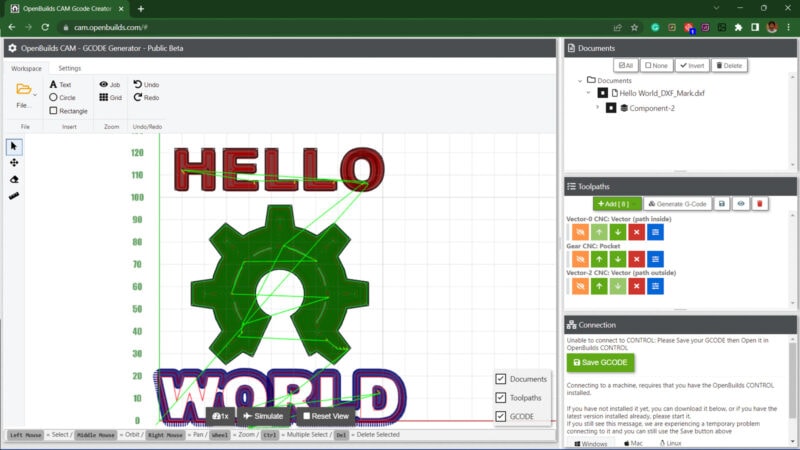
The OpenBuilds CAM and Control combines two different laser engraver software designed to interact and control your laser machine. OpenBuilds CAM lets you import designs in various file formats and converts them into a Gcode format. You can edit these files, simulate toolpaths, and get a preview of your machining job.
The OpenBuilds Control software works with the CAM program, allowing you to control the machine from your desktop. It works with GRBL-based controllers and gives you a clean and easy-to-use interface to control your laser cutter’s movements, speed, power, and other parameters.
Because OpenBuilds CAM runs in a browser environment, it’s independent of the OS requirements; however, it does need an internet connection to operate. In contrast, OpenBuilds Control software installs as an application on Windows, Mac, and Linux systems.
Both these stand out amongst other laser cutting software owing to their ease of use and excellent maker community. They’ll go well with a wide variety of laser engraver machines ranging from hobbyist level to professional grade.
- Price: Free
- Use for: Prepare files and control laser engraving machine
LaserWeb
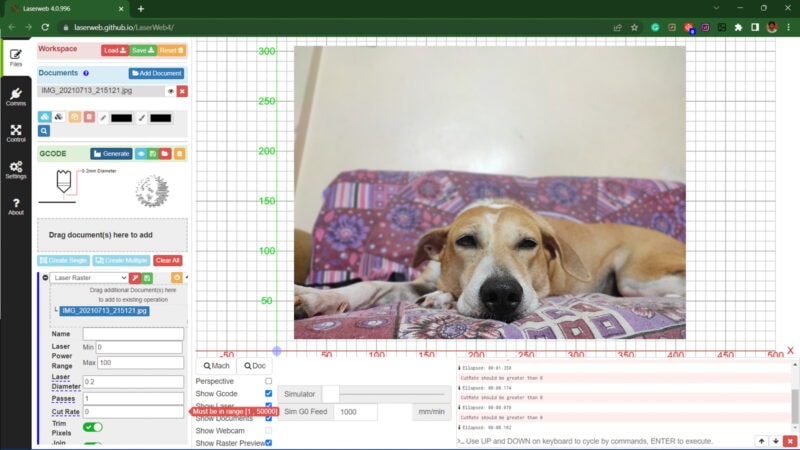
LaserWeb is more tuned towards use with laser cutters, and you can run it within a browser or any of the three aforementioned operating systems. It has a clutter-free UI, letting you quickly access all of the software features.
It features a cost-estimator that can be practical if you run a laser cutting business and an OCR recognition function for laser cutters that come with a camera.
You can import multiple files within a single project which is highly useful for collaborating with other users. Additionally, it’s completely open-source, and a lively and knowledgeable user community will help you make the most of LaserWeb software.
As free laser engraver software, LaserWeb is filled with features, and its ease of use makes it highly accessible to beginners and hobbyists.
- Price: Free
- Use for: Preparing files for laser cutting
SolidEdge 2.0

SolidEdge 2.0 is a 2D drafting software from SIEMENS designed and developed for professional users. Its unique set of practical and powerful features makes it useful for designing and editing files for laser cutters.
It has a basic yet effective toolset using which you can create various unique designs. If you’re an AutoCAD user, SolidEdge has a transition wizard that lets you seamlessly switch to the new work environment. In terms of features, you can add dimensions, annotations, and layers and export directly in DWG file format for laser cutters.
These features are handy for creating professional results quickly, and you can tweak it to use SolidEdge for everyday hobby purposes. Whichever way you decide to go, SolidEdge will help you to create and design your projects effortlessly, with minimal hiccups.
- Price: Free
- Use for: Professional laser cutting and manufacturing projects
SolveSpace
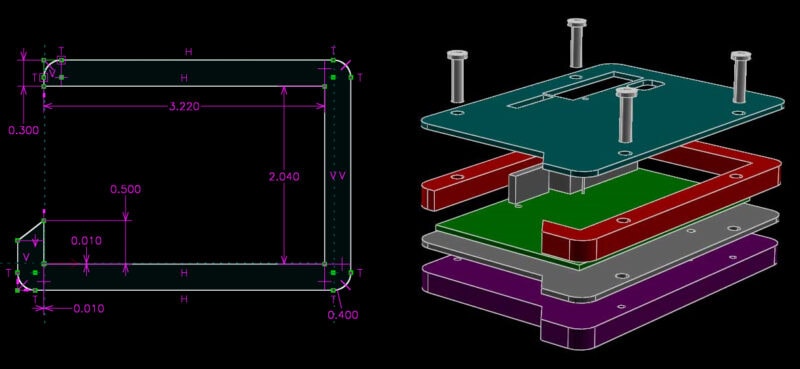
The UI of SolveSpace might seem dated, but its slew of features and responsiveness make it a robust laser engraving software. It comes in a small 10 MB application package, and you can use it on Windows, macOS, and Linux desktops.
The software features tools for 2D drawing but allows you to create 3D models and assemble them using parametric assembly tools. You can prepare files specifically for laser machining, waterjet cutting, and other machinery and export these files directly to dedicated laser engraver software that controls the machine.
SolveSpace also comes in handy for creating files for 3D printing in STL format, letting you use it with your 3D printers.
While its minimal UI contributes to a fast and small software package, it does add an extra learning curve for new users. Once you’re past that, SolveSpace is a powerful tool in your arsenal for creating unique designs with your laser cutter.
- Price: Free
- Use for: Designing and modeling laser cutting files
Paid
LightBurn

Amongst paid laser cutting software options, LightBurn ranks on the top in both popularity and features. It’s an all-inclusive software for laser cutting that lets you design and prepare your files for laser cutting, as well as for controlling the machine itself.
With LightBurn, you can create and edit new vector shapes and designs using its powerful tools. LightBurn also lets you perform boolean operations, edit nodes, and weld the shapes quickly in its editor environment. Moreover, you can import files in several different formats, which makes it easily compatible with various design software.
Its laser control functions allow you to set the power, speed, depth, and many other settings. There really isn’t much that LightBurn isn’t able to do.
Even though it’s paid software, there is a free trial of 30 days to check out all of its features. It’s supported on many laser cutter controllers, even though some cheap K40 laser cutter machines are not compatible with it. If you are choosing a laser cutter based on software compatibility, make sure it supports LightBurn.
Considering its vast array of features, relatively affordable price, and extensive support documentation, LightBurn is in our opinion hands-down the best software for laser engraving.
- Price: $60.00 – $120.00
- Use for: Designing and controlling laser engraving machines on all platforms
DraftSight
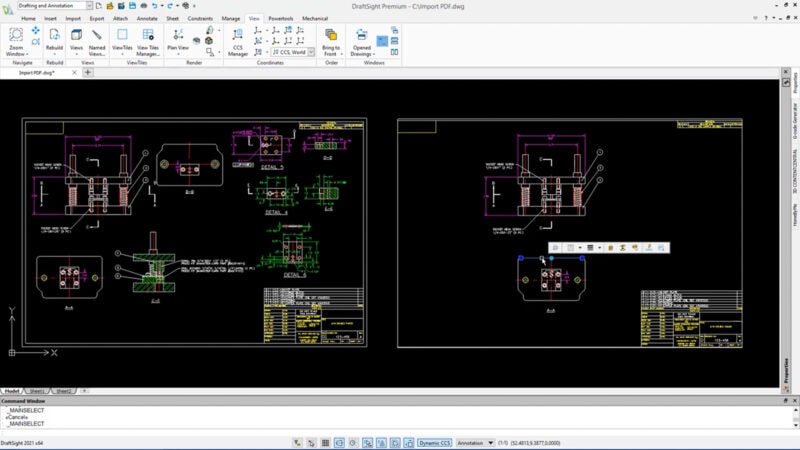
DraftSight is the most expensive and professional laser cutting software on the list. It’s developed by Dassault Systems, which is well known for its various professional-grade manufacturing software, like SolidWorks. DraftSight, too, stands true to that by featuring enterprise-level features in an easy-to-use interface.
Using its image tracing function, you can trace lines on an image and create a vector design within the software. This feature makes it easy for you to convert your raster files into vector format for efficient working with laser cutting machines.
The hairline feature provides an easy way to control your line width and help you execute clean cuts on your workpiece. Other features such as auto-dimensioning, sheet tables, creating layers, and 3D modeling tools are all designed to cater to a professional work environment.
Furthermore, DraftSight has an extensive support library filled with guides and tutorials that’ll help you to use the software in the best possible way. Though all these functionalities come at a steep price, it would be great to experiment with a trial version and check out if it’s worth the investment for your laser cutting projects.
- Price: $211.00 – $508.00 per year
- Use for: Enterprise and professional laser cutting workflow
Adobe Illustrator
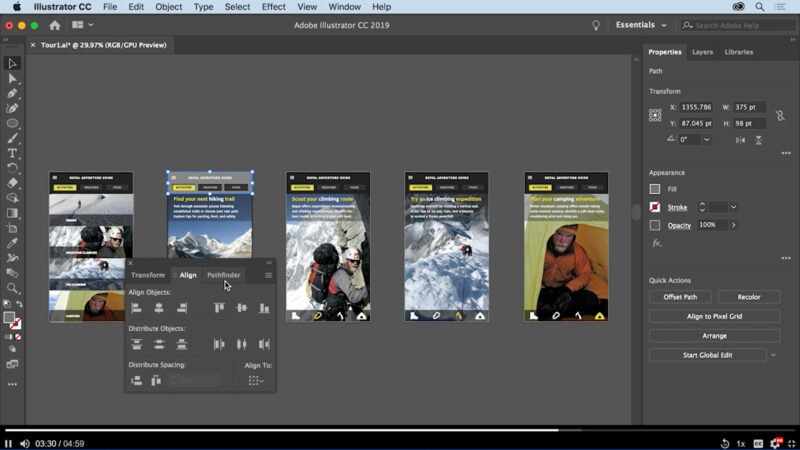
Adobe Illustrator sets the bar in the graphic design software category. Its fluid UI, powerful tools, and extensive community make it one of the best premium design software.
Illustrator’s versatility is well-known amongst creators. Aside from using it with standard operating systems, you can also use it on an iPad. Using an iPad can increase the learning curve, but does make it easy for you to create designs on the go. The cloud functionality helps with that, and you can take your designs anywhere and work on them on any device.
Adobe has included features such as raster and vector cutting, nesting components, image tracing, and many more that make it easy to generate the perfect SVG files to cut on your laser cutting machine.
For its price, Adobe Illustrator gives you much more than simple design software. It can be an excellent alternative to Inkscape if you’re looking for more professional-level, laser engraving software that’s easy to use and has support available for beginners and professionals.
- Price: $21.00 per month
- Use for: Creating and editing laser cutting files
Conclusion: Which Laser Cutter Control Software Should You Go With?
Laser cutting software is essential for bringing virtual designs to life on a laser machine. There are three stages of laser cutting software: design (CAD), machining (CAM), and control.
The design software allows for the creation and editing of designs, the CAM software converts the design into a readable format for the laser cutter, and the control software serves as the bridge between the control station and the laser cutter.
When choosing the best laser engraving software, it’s important to consider image format support, platform compatibility, and system requirements. Raster images are not suitable for laser cutters, so it’s important to choose software that supports both raster and Scalable Vector Graphics file formats and allows for easy conversion from raster to vector files.
Platform compatibility is also important, with some software designed to run on specific operating systems, such as Windows, while others are compatible with multiple platforms.
Additionally, some software may be resource-intensive and require a powerful system, while others are light on system requirements.
To us, LightBurn is the best laser cutter software out there. While it is a paid solution, it does let you do practically anything you want with your laser engravers or laser cutters.
What are your thoughts on the software included in this list? Do you have experience with either of them? Feel free to share it in the comments below, and if you have anything more you’d like to add, let us know.



